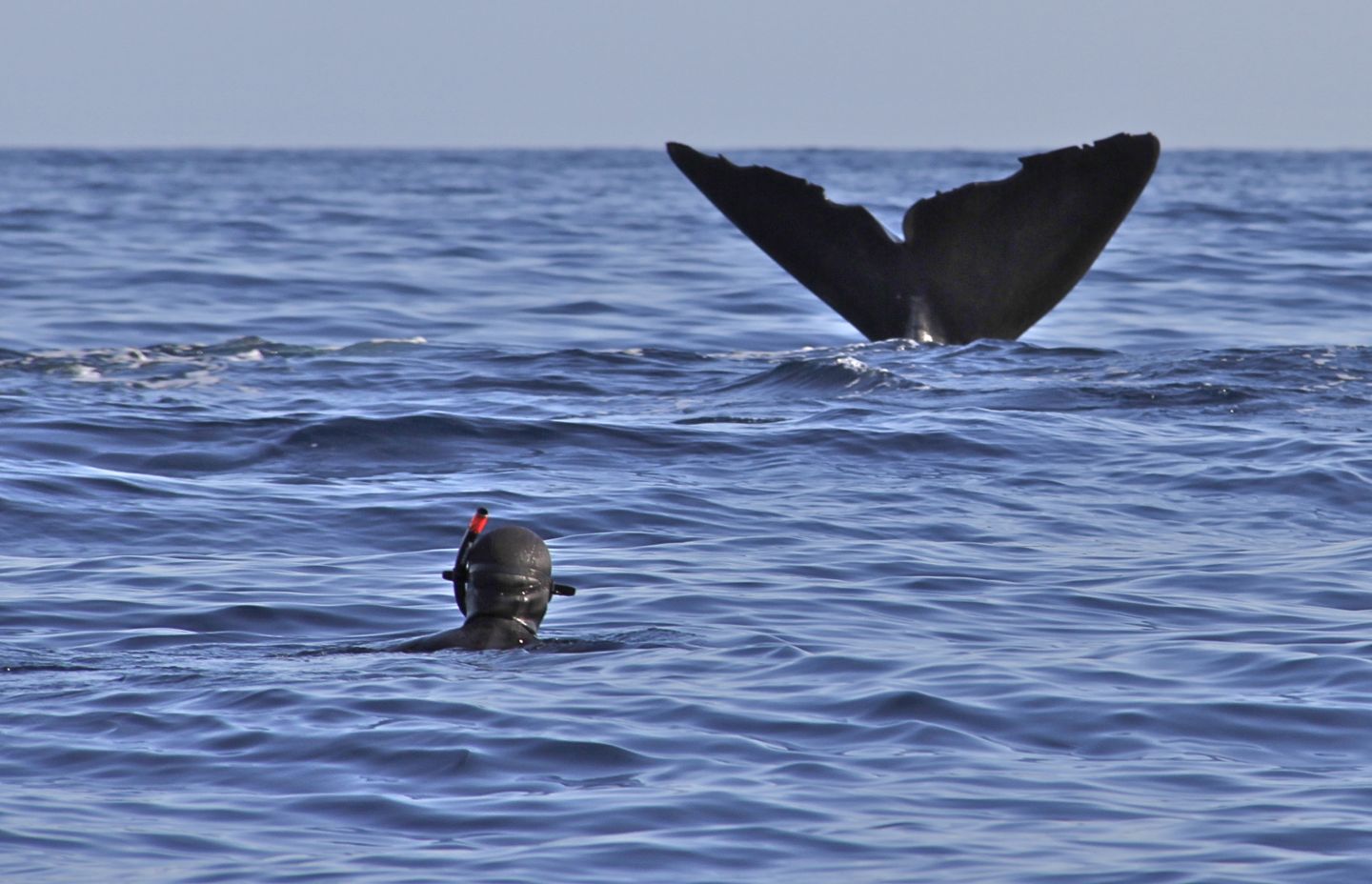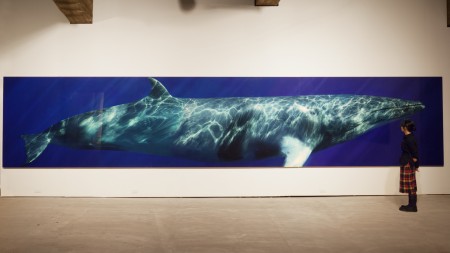While the massive scale of Bryant Austin’s life-sized whale photographs has an instantaneous and undeniable awing effect, it is the sense of emotional connection to his subjects that makes the images stick in the viewer’s mind. These are photographs taken with the cooperation of the whales. Mr. Austin has dedicated his life to creating bonds with wild whales, and his photographs are the records of his interactions with them. Swimming alongside these giants is an experience less than one millionth of 1% of the human population will experience.

Before he takes the plunge, Mr. Austin spends months preparing to film in the wild by working with whale biologists who study specific populations of whales. Mr. Austin travels with these experts, to identify unique individual whales who posses the personality and sense of curiosity to be agreeable subjects. Austin returns to the whales day after day to build a sense of familiarity which will eventually allow them to feel comfortable enough to approach him on their own terms. Swimming with whales is intrinsically very dangerous if for no other reason than their enormous size. A single accidental flick from a pectoral fin or fluke could pummel a human swimmer. A threatened whale or a mother protecting her calf can be particularly dangerous. While whales have the potential to be destructive, it is much more likely that a whale disturbed by a human swimmer will simply swim away. For this reason Austin works hard to build the trust of his subjects.
Whales, like humans, are intelligent mammals that live within social structures. As such, whales have a kind of etiquette based on behavioral cues. To get close enough to photograph the whales Mr. Austin has to abide by a different species code of conduct. For example, Austin does not use SCUBA while visiting the whales because the bubbles produced by the equipment can be construed as a threat display between whales.
“Although we can’t communicate with whales verbally, you can communicate intention. And I do this by being very slow and predictable when I move. And I remain motionless most of the time, and I want to communicate to them that I’m interested in them, but I’m also respectful, and I’m just going be very passive and patient. Most of the time, they ignore me or swim away, and there’s just that, those few exceptional moments in the season where they decide to come up to me and spend a few moments”
It's within these few rare moments that Bryant Austin is able to create his stunning photographs. In fact, his entire collection to date represents interactions with only 9 particularly curious individual whales. As top predators, whales generally tend to demonstrate curiosity in exploring their environment. Some species like humpback whales tend to be more curious than other species, but even within a species individual whales will show different personality traits. Through his non-profit organization Marine Mammal Conservation Through the Arts, Mr. Austin works for months for the brief seconds and minutes when the whales come to inspect him.
